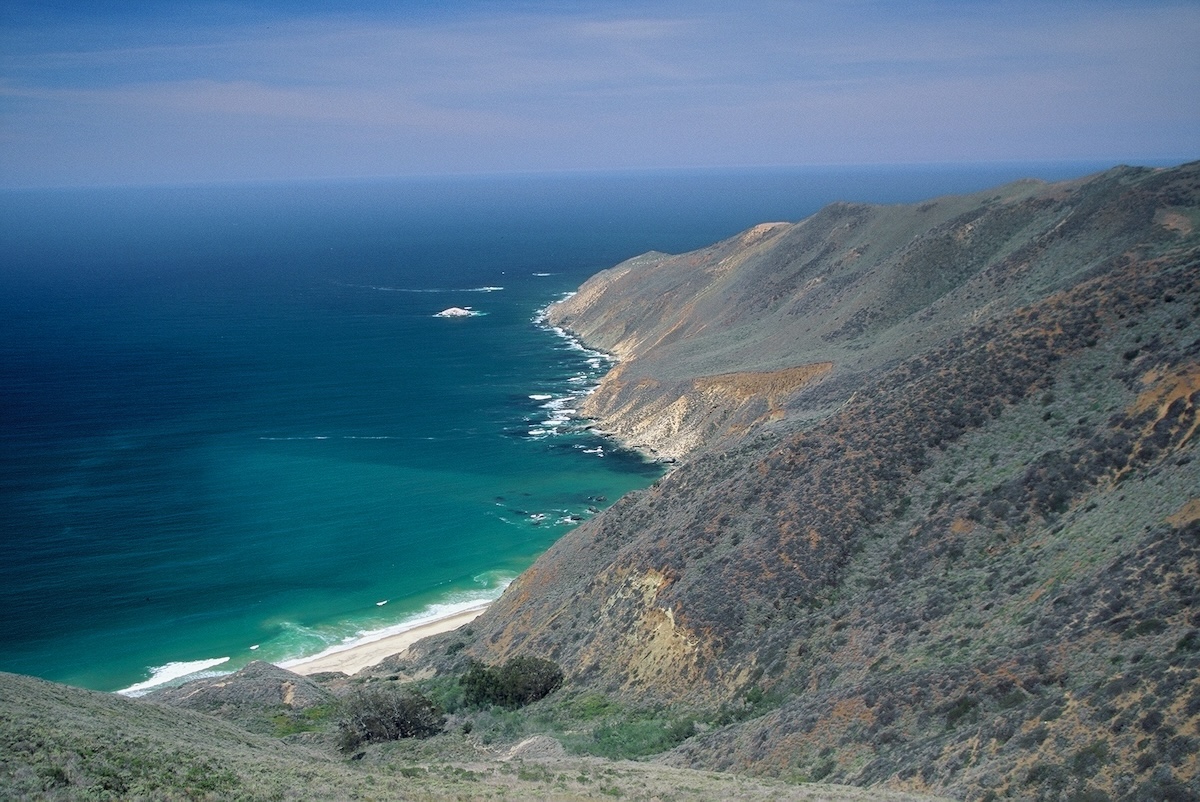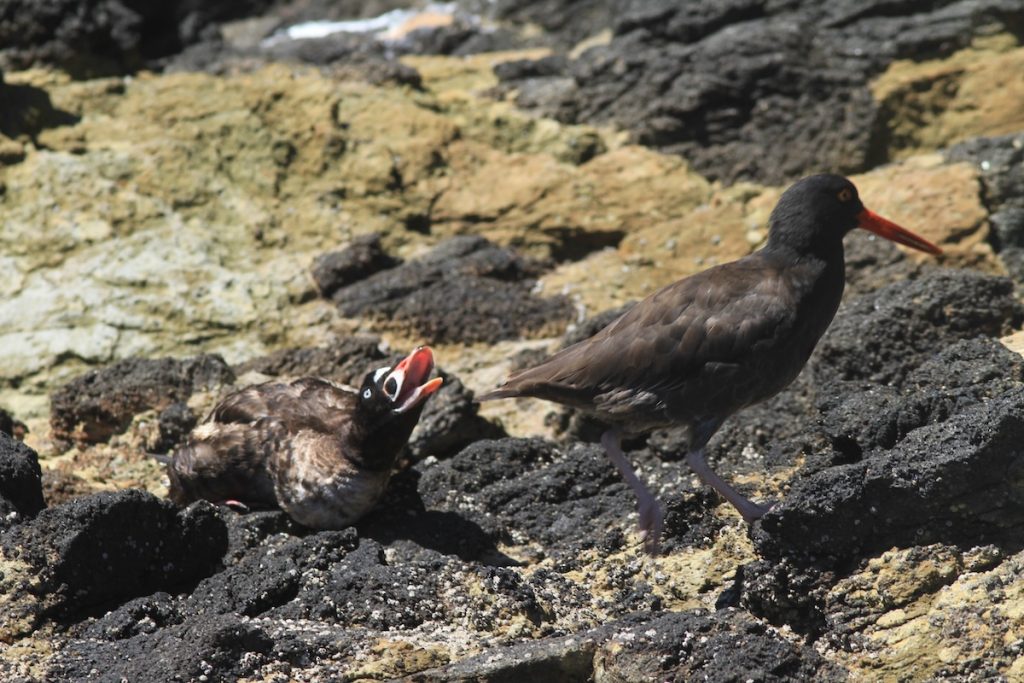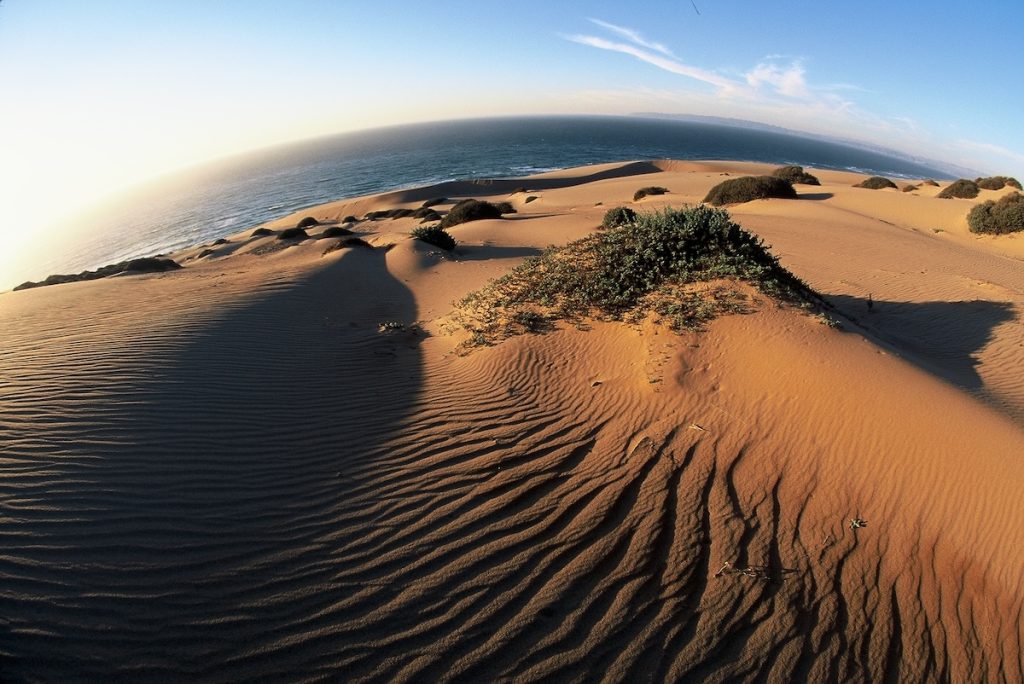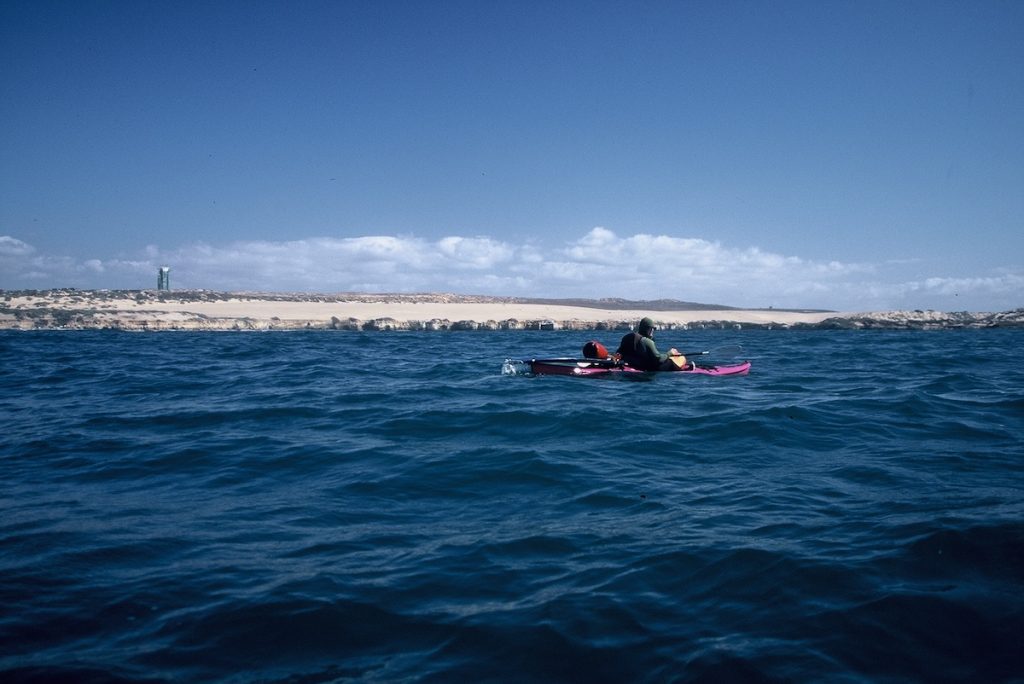Flight of the Skunk-headed Coot

From my kayak, there was no touching down on any beach on Vandenberg Air Force Base. This remote stretch of rugged Central California Coastline is off limits to Joe Public, even if the only member of the common man within the region was a salt-encrusted, sunscreen-smeared paddler in search of empty surf.
I was paddling from the mouth of the Santa Maria River back to Carpinteria, and some solitude was on my agenda. Whenever I’m paddling on my own or with other kayakers, I’m always on the lookout for those hardy seabirds that revel in unruly sea conditions. That’s because it appears as if nothing fazes them.
As I paddled toward craggy Purisima Point, I followed a long, ragged line of skunk-headed coots bobbing in the frothy crests of solid six-to-eight-foot surf. More widely known as surf scoters (Melanitta perspicillata), these sea ducks migrate south from some of the wildest places in Alaska and Canada, and down the West Coast, congregating in open water.
Humming Along

They are also easily spooked. About 30 yards off he starboard side of my kayak, I paralleled them beneath gray skies as they bobbed in dark, cobalt blue waters. Suddenly, the flock of at least 200 surf scoters took flight. As they flew, their wings hummed mightily. It’s one of my favorite moments from my kayak. When a surf scoter flies, the rapid pumping of its wings makes an incredible high-pitched hum. Hearing that “whor-whor-whor-whor” in open water with the surf thundering in the background is an oceanic melody like no other.
It’s all sound and fury, though. Even though they are skittish, generally, surf scoters barely rise above the water and usually stop 100 yards from liftoff. From there, they go right back to feeding. With so many scoters in proximity to each other, they have lots of eyes on the water. They don’t miss much.
Off my left shoulder, the surf continued booming on sandy, barren beaches. The cluster of surf scoters kept their distance, staying 50 yards south of me. After pulling out my binoculars from my drybag, I scanned the horizon toward Point Arguello. There were multiple rafts of surf scoters rolling in the early winter swell. The rafts rose and then momentarily vanished in the steep troughs along this roadless stretch of Northern Santa Barbara County.
Scoters in Spindrift

The coast between Point Sal and the Guadalupe – Nipomo Sand Dunes National Wildlife Refuge – has always been a terrific place to see surf scoters. The last time I walked the dunes, the surf was five-foot with a slight offshore breeze. Impressive, salty plumes fanned 15 feet into the ocean air, wafting westward with every breaking wave. What really caught my eye were all the surf scoters feeding and frolicking in the billowing wave crests.
Named for their uncanny ability to forage in turbulent surf, they are best known for the drake’s spectacular multicolored bill. The males are good looking; their bright orange bill standing out against their jet-black feathers and pearly-white markings. The females have more of a mottled, mocha color filling out their entire feathery frame.
Watching them maneuver in powerful surf was entertaining from the wave-battered beach. They dove through the wave crests with utter aplomb, but dipping no further than 30 feet below the surface. Small mollusks, especially clams and tiny mussels, are a large part of their aquatic menu. They also favor marine snails, marine worms, small crabs, sea squirts, and species related to jellyfish. Aquatic vegetation is also consumed. Strong back legs and stubby wings allow them to “fly” through the water. Invertebrates beware.
Surf scoters are another avian species that plays their part in maintaining balance within the food web. Their contribution is consuming marine invertebrates and then cycling out nutrients in the water column. Although the male’s bill is colorful, it’s also an efficient tool for prying open shellfish attached to rocks. They don’t possess teeth, so they swallow all their prey whole. However, with powerful gizzards they crush and digest shells with relative ease.
Scorpion Rock Sanctuary

They are my kind of seabird. I always find good numbers of surf scoters during winter-into-spring in remote, far-flung waters along the West Coast where no one else is around. They are a welcome sight while paddling across the Santa Barbara Channel, and around remote parts of the Channel Islands National Park.
However, many surf scoters (mainly immature birds) stay put, skipping out on their breeding grounds in the far north. Some birds don’t feel the strength to make that arduous northerly migration, and if they’re feeling comfortable where they are during the winter, they may decide to remain. That will mean hanging out inside coastal bays, coves and estuaries as far south as Baja California.
This past spring and summer at Scorpion Anchorage on Santa Cruz Island, there were about 24 surf scoters that remained after winter. While leading kayak tours I’d see them enjoying the clear, calm waters surrounding Scorpion Rock, an important breeding and nesting site for seabirds. Each time I paddled guests out there I kept expecting to not see any surf scoters, half-assuming they had made that collective decision to finally fly north – but they never did. They became so comfortable they were sharing the barnacle-encrusted Scorpion Rock with black oystercatchers and western gulls, while blending in well with their summer digs.
And throughout the summer, I continued hearing that familiar hum from my kayak, Scorpion Anchorage proving to always be a reliable refuge for wayward seabirds.







You must be logged in to post a comment.